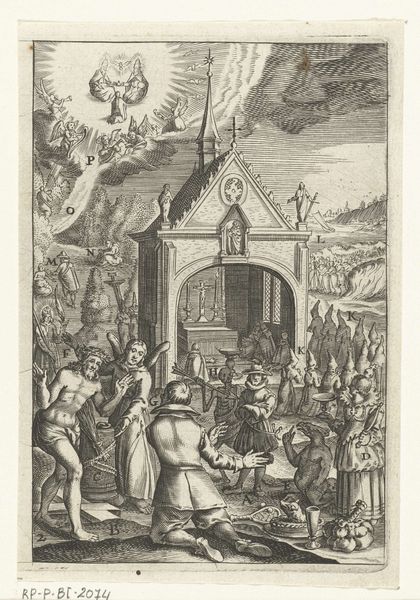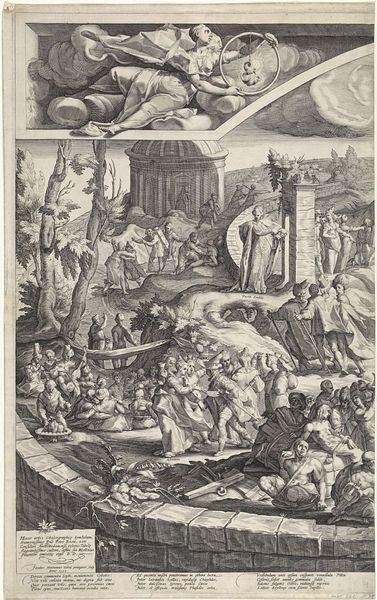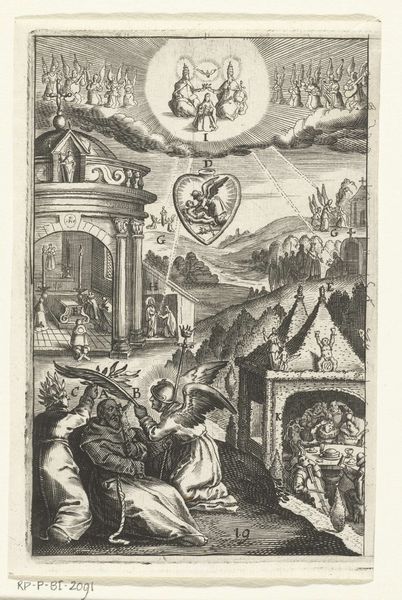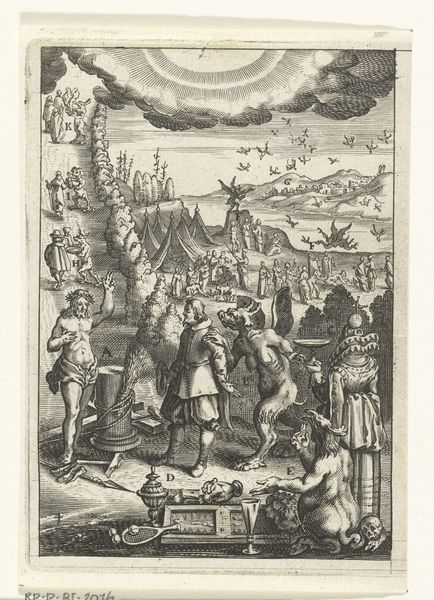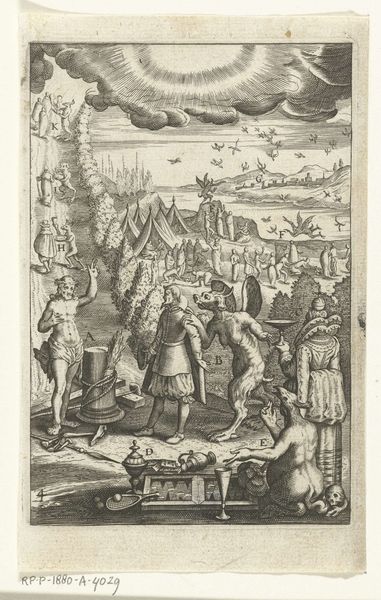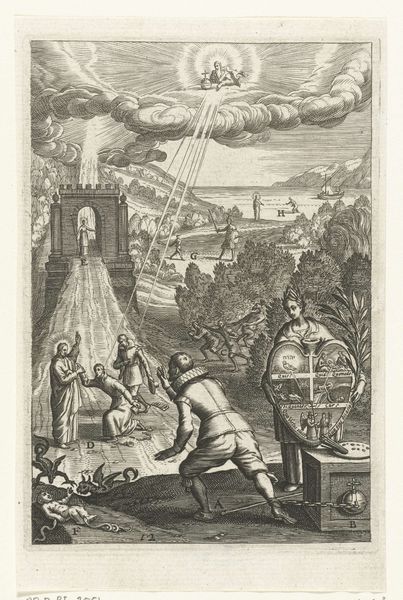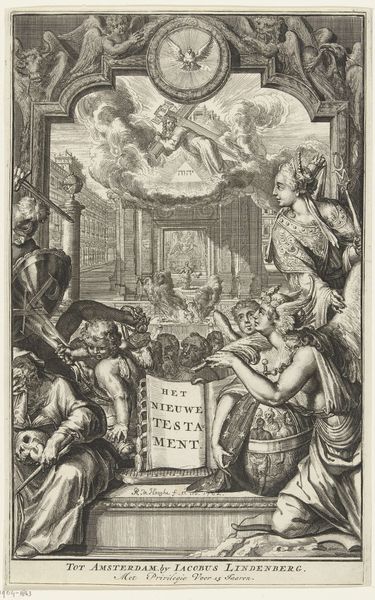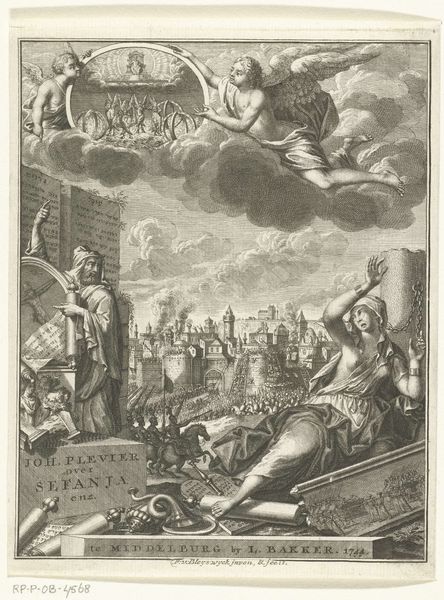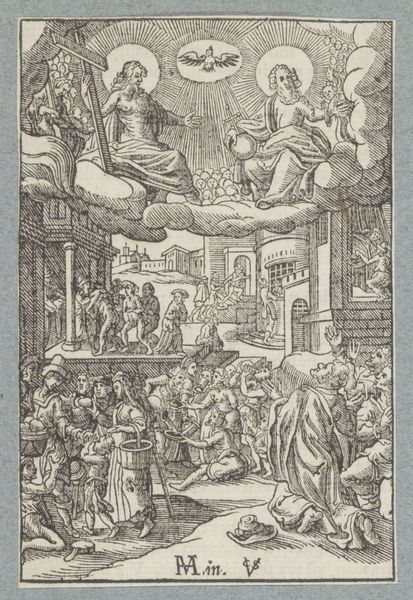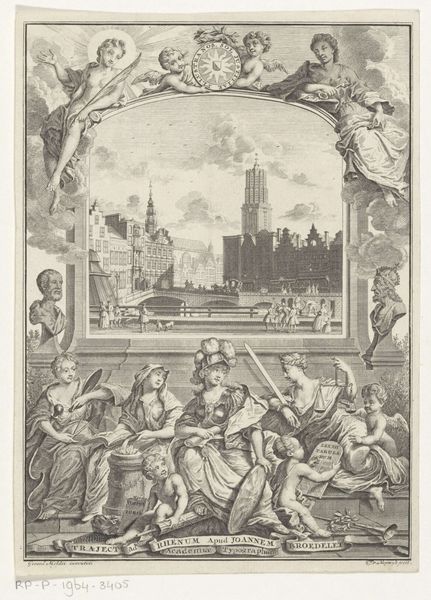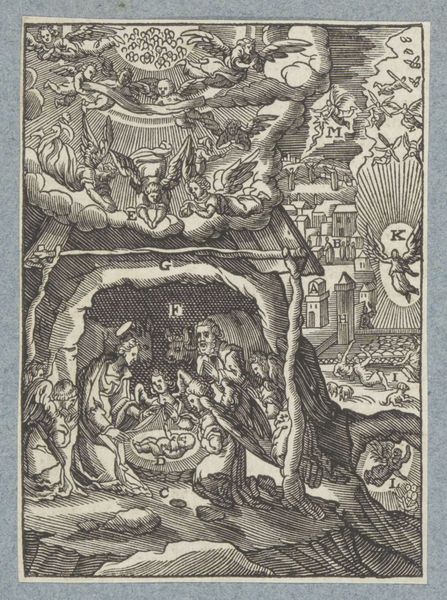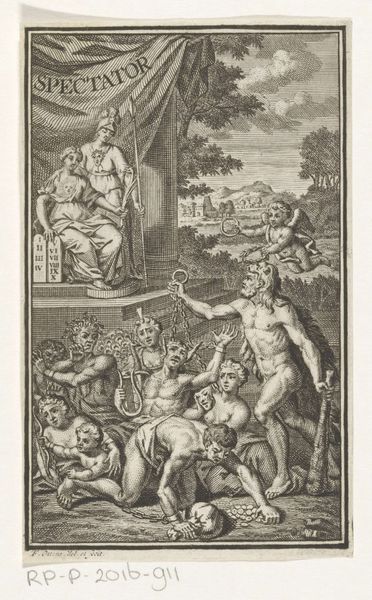
Embleem met man die afstand doet van zijn aardse bezittingen en zich bekeert tot het christelijke geloof 1620 - 1623
0:00
0:00
print, engraving
#
allegory
#
narrative-art
#
baroque
# print
#
figuration
#
line
#
history-painting
#
engraving
Dimensions: height 140 mm, width 93 mm
Copyright: Rijks Museum: Open Domain
Curator: What strikes me immediately about this piece is its meticulous detail, especially considering it's an engraving. It’s bursting with allegorical figures. Editor: Agreed. It feels both intensely personal and wildly performative. What am I even looking at here? Some kind of public spectacle of self-denial? Curator: Indeed. What we have here is an early 17th-century engraving, likely from the period 1620-1623, now residing at the Rijksmuseum. It's titled "Emblem with a man relinquishing his earthly possessions and converting to Christianity." Editor: Conversion therapy: the original reality TV. The way this guy's crawling… Talk about a grand gesture. Curator: The print clearly leans into Baroque theatricality to emphasize the dramatic shift in spiritual alignment. The Rijksmuseum classifies its creator as anonymous, leaving us to interpret the imagery without a named artist's context. Editor: Makes it even more universal, right? Anyone can project their own "stuff" onto it, no? This artist may be onto something - it's quite current. The juxtaposition of earthly indulgence, with all that food and a literal grinning demon, versus heavenly bliss is unsubtle, yet strangely effective. Like an ad for the afterlife. Curator: It is typical of its time, employing recognizable figures and clear moral didacticism aimed to persuade viewers toward repentance. Consider how prints like these circulated religious and political ideas across Europe. This narrative speaks directly to anxieties around salvation. Editor: It's the devil for me—sitting smugly while someone trades worldly comfort for… what exactly? Hard to tell with that swarm of angels hovering above a rather bland-looking chapel. I'd miss the lute, honestly. Curator: You touch upon a tension embedded in the theology of the era, this binary between the temptations of the flesh and the promise of transcendence. This emblem participates in an established tradition of didactic imagery, leveraging print culture to shape public consciousness. Editor: You know, diving into this dark imagery kind of flipped my initial reaction. I am not so sure that this act of devotion is an answer; more like someone just handed away his questions, and gave up on having an embodied existence. He's just getting on his knees - but who is he becoming in the process? Curator: It’s precisely that kind of nuanced inquiry that allows these pieces, though artifacts from the past, to remain powerfully relevant in the present. They trigger deeper thought. Editor: Exactly, they hold up a mirror to our current value system... or lack of. Heavy!
Comments
No comments
Be the first to comment and join the conversation on the ultimate creative platform.
